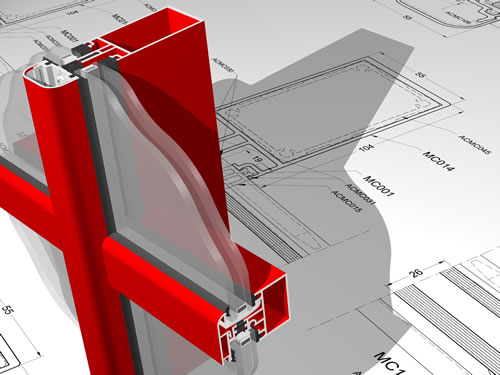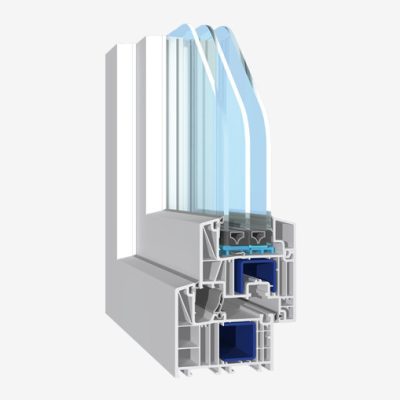Modern construction is hard to imagine without curtain walls. Their history is inextricably linked to the beginning of the 20th century and Francis Plum. It was then that the concept of curtain walls found its way into the notebooks of architects and designers from all over the world.
Where did the idea for curtain walls come from?
The first curtain wall made of aluminium and glass was created in 1906 by the architect Francis Plum. The prototype had openings for water drainage and pressure equalisation. This was the beginning of the production and use of glass facades. In 1930, aluminium profiles with thermal breaks were developed. Thanks to the development of glass production technology, glass gained a wide range of colours and better thermal insulation properties. In Poland, the first lightweight curtain walls appeared at the turn of the 1960s. The ZSL building in Warsaw and the Cracovia hotel in Krakow were among the first buildings in the country to use this innovative method. However, the initial covers were very imperfect, prone to damage and corrosion. In summer, the rooms overheated and in winter they became excessively cold. The early nineties saw development in this industry, resulting in increasingly satisfactory technical, construction and insulation parameters.
When designing curtain walls many different aspects must be taken into account, which will affect the later appearance and durability of the structure. The method of attachment, the visibility of the fittings and the texture and colour of the exterior wall are the first of the decisions that need to be made. Curtain walls are very often installed at great heights, which is why they are required to be very resistant to wind force. Long-term impermeability and resistance to moisture or precipitation are also absolute requirements during the design and installation of such a structure. Skyscrapers tend to undergo slight deflections, so the curtain walls installed on them should be sufficiently flexible. Curtain walls should act as a thermal and acoustic barrier. Modern panels allow for the collection and accumulation of solar energy for heating rooms. Curtain walls located at high altitudes should be covered with a specialised coating that will ensure they are self-cleaning.
The undoubted advantage of curtain walls is that they significantly extend the lifespan of the façade. In addition, they give buildings a modern style and original character. It is possible to choose the type of fastenings and their level of visibility depending on the investor’s expectations. However, at present, walls with the most uniform structure and smooth texture without visible mounting elements are most often preferred. Thanks to the use of appropriate technologies, it can also provide additional thermal protection, creating a barrier against both cold air from outside and excessive heating of rooms. Unfortunately, curtain walls are an expensive solution, which is why they are not yet widely used. In addition, construction and installation errors in curtain walls can lead to their destruction, reduced functionality and, consequently, damage to the building itself. Requirements for curtain walls
Advantages and disadvantages of curtain walls




